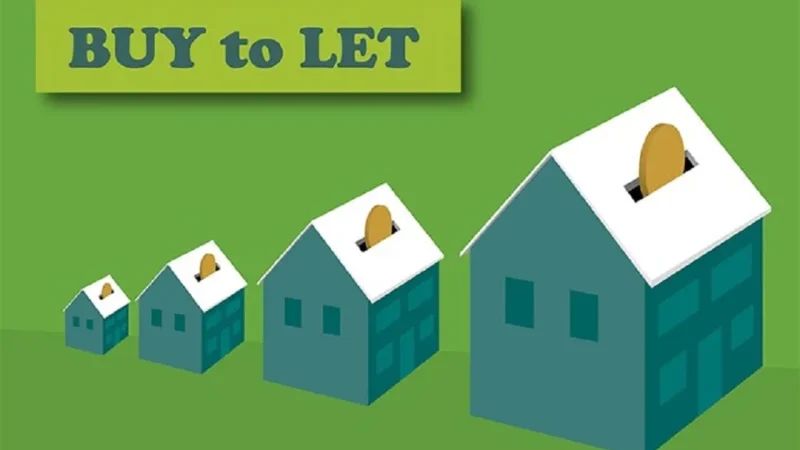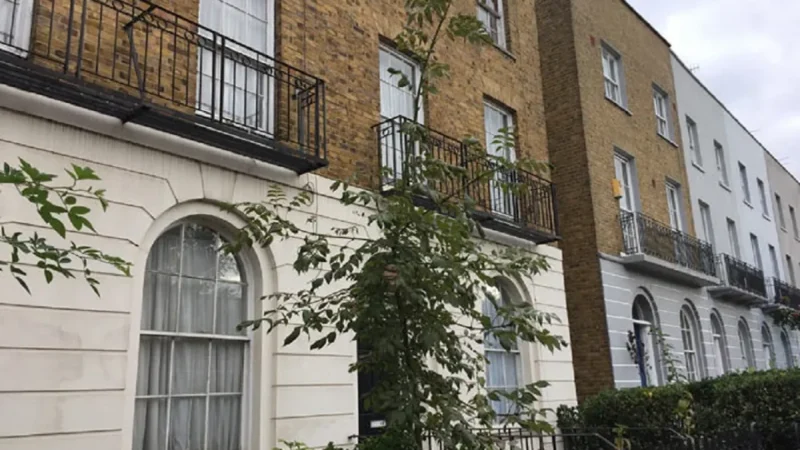Can I Live in a House With a Buy-to-Let Mortgage UK

Table of Contents
ToggleCan I Live in a Buy to Let Property UK-
Investing in buy-to-let properties has long been a famous avenue for individuals seeking to generate passive income and build wealth through real estate. However, a common question is whether it is possible to live in a property designated as a buy-to-let investment.
In this blog post, we will delve into the primary restrictions and guidelines surrounding living in a buy-to-let property in the UK. We will explore the legal considerations, tenancy agreements, potential implications, and alternative housing solutions that individuals should be aware of when contemplating the idea of residing in a property purchased as a buy-to-let investment. So, if you’ve ever wondered about the possibilities of living in your buy-to-let property, read on to discover the ins and outs of this intriguing topic.
Can You Live in a Buy-to-Let Property?
Technically, as the owner of a buy-to-let property in the UK, you can live in it if you choose to do so. However, there are specific considerations and factors to keep in mind:
- Mortgage Restrictions:Most buy-to-let mortgages have terms that explicitly state the property must be rented out and not used as a primary residence. Living in a property with a buy-to-let mortgage could breach the terms of your mortgage agreement.
- Tenancy Agreements:If you have tenants in the property, you would need to end their tenancy by the legal requirements. This typically involves providing proper notice and following the appropriate procedures to terminate the tenancy agreement.
- Tax Implications:Living in a buy-to-let property can affect the tax treatment of rental income and capital gains. It’s essential to consult with a tax advisor or accountant to understand the tax implications of using a buy-to-let property as a primary residence.
- Insurance Considerations:Insurance policies for buy-to-let properties differ from those for owner-occupied homes. If you decide to live in a buy-to-let property, you may need to switch to a residential insurance policy that covers personal use.
- Local Regulations:Local regulations and licensing requirements may be specific to buy-to-let properties, mainly if they are classified as houses in multiple occupations (HMOs). It’s essential to ensure compliance with any applicable regulations in your area.
It’s crucial to consider these factors and consult with professionals, such as mortgage advisors, solicitors, tax experts, and insurance providers, to understand the implications and potential consequences of living in a buy-to-let property.
Legal Considerations and Tenancy Agreements-
Legal considerations and tenancy agreements are crucial to understanding buy-to-let properties and living in them. Here are some key points to consider:
- Tenancy Agreements:A tenancy agreement is a legally binding contract between a landlord and a tenant. It outlines the rights and responsibilities of both parties during the tenancy period. If you intend to live in a buy-to-let property, you may need to terminate existing tenancy agreements following the legal requirements.
- Notice Period:When terminating a tenancy agreement, you typically must provide the tenant with proper notice as the law requires. The length of the notice period may vary depending on factors such as the type of tenancy and its duration. Consult local housing laws or seek legal advice to determine the appropriate notice period for ending a tenancy.
- Deposits:If you have collected a tenancy deposit from your tenants, you must comply with the regulations regarding its protection. In the UK, landlords must protect deposits in a government-approved deposit protection scheme. When ending the tenancy, you may need to follow the proper procedures to return the deposit to the tenant or make deductions as allowed by law.
- Eviction Process:If a tenant refuses to vacate the property voluntarily, eviction may become necessary. Familiarizing yourself with the eviction process and following the legal procedures and requirements outlined by the relevant housing laws is essential. In the UK, eviction proceedings typically involve obtaining a possession order from the court.
- Local Regulations:Local authorities may have specific regulations and licensing requirements for buy-to-let properties, mainly if categorized as houses in multiple occupations (HMOs). It is essential to understand and comply with any local regulations that apply to your property, such as obtaining the necessary licenses or meeting safety standards.
Exceptions and Alternatives-
When living in a buy-to-let property, there may be some exceptions or alternative options to consider. While these may vary depending on individual circumstances, here are a few possibilities:
- Consent to Let:Some mortgage lenders may temporarily permit you to live in the property under a “consent to let” arrangement. This allows you to occupy the property for a specific period while technically having a buy-to-let mortgage. However, this is usually granted for short-term circumstances, such as a change in personal circumstances or property renovations.
- Remortgaging:If you wish to live in a buy-to-let property, you may consider remortgaging the property to switch from a buy-to-let mortgage to a residential mortgage. This would involve reassessing your financial situation and meeting the criteria for a residential mortgage, including affordability assessments.
- Purchasing with Owner-Occupier Intent:Instead of converting an existing buy-to-let property, you can explore purchasing a property to live in it as your primary residence. This would involve securing a residential mortgage and selecting a property suitable for your needs.
- Buy-to-Let Investment with Self-Contained Unit:If you are considering living in a property while still generating rental income, you could explore buy-to-let properties with self-contained units, such as separate annexes or flats. This allows you to live in one part of the property while renting out the other, maintaining the investment aspect.
- Alternative Housing Options:If living in a buy-to-let property does not align with your goals or circumstances, you can explore other housing options, such as purchasing a residential property, considering shared ownership schemes, or exploring rental properties specifically for owner-occupiers.
How buy-to-let mortgages work and their implications for living in the property-
Buy-to-let mortgages are specifically designed for individuals who want to purchase a property to rent it out to tenants. Here’s an overview of how buy-to-let mortgages work and their implications for living in the property:
- Purpose:Buy-to-let mortgages are used to finance the purchase of investment properties rather than primary residences. The purpose is to generate tenant rental income to help cover mortgage repayments and other property-related expenses.
- Loan Criteria:Lenders have specific criteria for buy-to-let mortgages. The property’s potential rental income typically determines the maximum loan amount, although personal income and creditworthiness may also be considered. The interest rates for buy-to-let mortgages can be higher than those for residential mortgages.
- Deposit:Buy-to-let mortgages usually require a larger deposit compared to residential mortgages. Typically, lenders ask for a minimum deposit of 25% to 40% of the property’s value, although this can vary depending on the lender and individual circumstances.
- Rental Income:Lenders assess the potential rental income when determining the mortgage amount. They may require the projected rental income to meet a certain percentage of the mortgage repayments, such as 125% or 145% of the monthly mortgage payment.
- Mortgage Repayments:As the borrower, you are responsible for making monthly mortgage repayments. These repayments are typically made using the rental income you receive from tenants. It’s important to carefully calculate the potential rental income and ensure it sufficiently covers the mortgage payments and other expenses.
- Occupancy Restrictions:Most buy-to-let mortgages have clauses that prohibit the borrower from living in the property themselves. These mortgages are specifically designed for investment purposes, and residing in the property would typically breach the terms of the mortgage agreement.
Implications for Living in the Property:
If you have a buy-to-let mortgage and decide to live in the property yourself, there are several implications to consider:
- Mortgage Breach:Living in the property violates the buy-to-let mortgage terms. You may need to inform the mortgage lender and switch to a residential mortgage or seek their consent to temporarily let you live in the property.
- Tenancy Agreements:If existing tenants are on the property, you must terminate their tenancy agreements by the law before occupying the property.
- Potential Financial Impact:Living in a buy-to-let property could affect your ability to generate rental income and potentially impact the financial viability of the investment. Considering the financial implications of transitioning the property from an investment to a primary residence is essential.
Pros and Cons of Living in a Buy-to-Let Property -
Residing in a property you own as a buy-to-let investment has advantages and disadvantages. Here’s an evaluation of the pros and cons:
Advantages:
- Convenience and Familiarity:Living in a property you own eliminates the need to search for a new home or go through the buying process. You are already familiar with the property and its surroundings, which can provide a sense of convenience and comfort.
- Potential Cost Savings:By living in a property you own, you avoid paying rent or mortgage on a separate primary residence. This can result in potential cost savings and reduce your housing expenses.
- Property Appreciation:If the property’s value increases, you can benefit from potential capital appreciation. This could be advantageous if you plan to sell the property and realize a profit.
- Control and Flexibility:As the owner and occupant, you have greater control over the property. You can make modifications or improvements to suit your preferences without seeking permission from a landlord.
Disadvantages:
- Loss of Rental Income:If the property were generating rental income, you would lose that income stream by living in the property yourself. This could impact your financial situation and potentially reduce your overall investment returns.
- Mortgage Considerations:Most buy-to-let mortgages have specific terms and conditions prohibiting the borrower from residing in the property. Living in the property could breach the mortgage agreement, requiring you to switch to a residential mortgage or seek consent from the lender.
- Tax Implications:Living in a previously rented property may have tax implications. Rental income and capital gains tax treatment may change, potentially affecting your tax obligations. It is crucial to consult with a tax advisor to understand the tax implications of transitioning the property to your primary residence.
- Limited Investment Diversification:By residing in a buy-to-let property, you are tying up a significant portion of your investment in a single asset. This reduces diversification, potentially increasing exposure to market fluctuations and risks associated with a single property.
- Tenant Displacement:If the property has existing tenants, you would need to terminate their tenancy agreements, which could disrupt their living arrangements. Ensuring a smooth transition and adhering to legal obligations is essential.
Tenant and Landlord Relationships -
When a buy-to-let landlord becomes the occupant of the property, it can create a unique dynamic between the landlord and the tenant. Here are some key considerations:
- Change in Landlord-Tenant Relationship:The relationship between the landlord and tenant undergoes a significant shift. The tenant may perceive the landlord’s occupancy as a change in the dynamics and may require adjustments in managing the tenancy.
- Termination of Tenancy Agreement:If there are existing tenants in the property, the landlord-occupant would need to terminate the tenancy agreement legally. This involves providing proper notice per local regulations and following the procedures for ending the tenancy.
- Communication and Boundaries:The landlord-occupant must establish clear communication and boundaries with the tenant. This includes discussing any changes in responsibilities or procedures that may arise due to the landlord’s occupancy.
- Privacy and Access:The landlord-occupant must respect the tenant’s privacy rights and provide reasonable notice when accessing the property for inspections or repairs. Establishing protocols and procedures for such instances is essential to maintain a respectful and harmonious living arrangement.
- Maintenance and Repairs:The landlord-occupant remains responsible for the care and repairs of the property, even though they are also residing in it. It is crucial to address any maintenance issues promptly and ensure that the tenant’s needs are met promptly.
- Rent and Financial Considerations:If the landlord was receiving rental income from the tenant, transitioning to living in the property means the loss of rental income. The financial implications for both the landlord-occupant and the tenant must be considered and addressed, ensuring necessary adjustments are made.
- Compliance with Tenancy Laws:Both the landlord-occupant and the tenant must continue adhering to relevant tenancy laws and regulations. This includes meeting legal obligations, such as protecting the tenant’s deposit (if applicable) and ensuring compliance with local housing standards.
Alternative Housing Options-
If living in a buy-to-let property is not feasible or desirable, there are several alternative housing solutions you can consider:
- Residential Property:Explore purchasing a residential property that suits your needs. This allows you to have a dedicated home for personal use without the considerations and restrictions of buy-to-let investment.
- Shared Ownership:Consider shared ownership schemes, which enable you to purchase a percentage of a property while paying rent on the remaining portion. This can be an affordable option for those who cannot afford a property outright.
- Renting:Renting a property can provide flexibility and eliminate the responsibilities associated with property ownership. You can choose a rental property that meets your specific location, size, and amenities requirements.
- Co-living Spaces:Co-living spaces are becoming increasingly popular, particularly in urban areas. These are shared living arrangements where individuals or groups rent private rooms or apartments within a larger property. Co-living spaces often offer communal areas and shared facilities, fostering a sense of community.
- Serviced Apartments:Serviced apartments are fully furnished for short-term or long-term stays. They provide the comforts of home with the convenience of hotel-like services, making them suitable for individuals who prefer flexibility and hassle-free living.
- Housing Cooperatives:Joining a housing cooperative allows you to become a member of a collectively owned and managed housing community. Members contribute financially and actively participate in decision-making, providing affordable and communal living arrangements.
- Mobile Homes or RV Living:For those seeking a more nomadic lifestyle, mobile homes or recreational vehicles (RVs) offer the freedom to live and travel in a self-contained unit. This option provides flexibility and can appeal to individuals who prefer a minimalist lifestyle or enjoy frequent travel.
Conclusion-
In conclusion, living in a buy-to-let property in the UK poses certain restrictions and guidelines that need to be considered. While living in a property financed by a buy-to-let mortgage is generally not permitted, there are exceptions and alternative options available.
Understanding the legal considerations and tenancy agreements is crucial. Breaching the terms of a buy-to-let mortgage by residing in the property can have consequences, including the need to switch to a residential mortgage or seek the lender’s consent.
Exploring alternative housing solutions becomes necessary if living in a buy-to-let property is not feasible. Options such as purchasing a residential property, considering shared ownership, renting, co-living spaces, serviced apartments, housing cooperatives, or mobile homes/RV living provide viable alternatives to meet individual housing needs.
It’s important to carefully evaluate the advantages and disadvantages of residing in a property you own as a buy-to-let investment. Factors such as potential rental income loss, tax obligations, financial implications, and the impact on the landlord-tenant relationship should be considered when making decisions.
Seeking professional advice from mortgage advisors, tax experts, and legal professionals is highly recommended to navigate the complexities and make informed choices. Finding the most suitable housing solution ultimately involves aligning your personal circumstances, financial goals, and lifestyle preferences.






